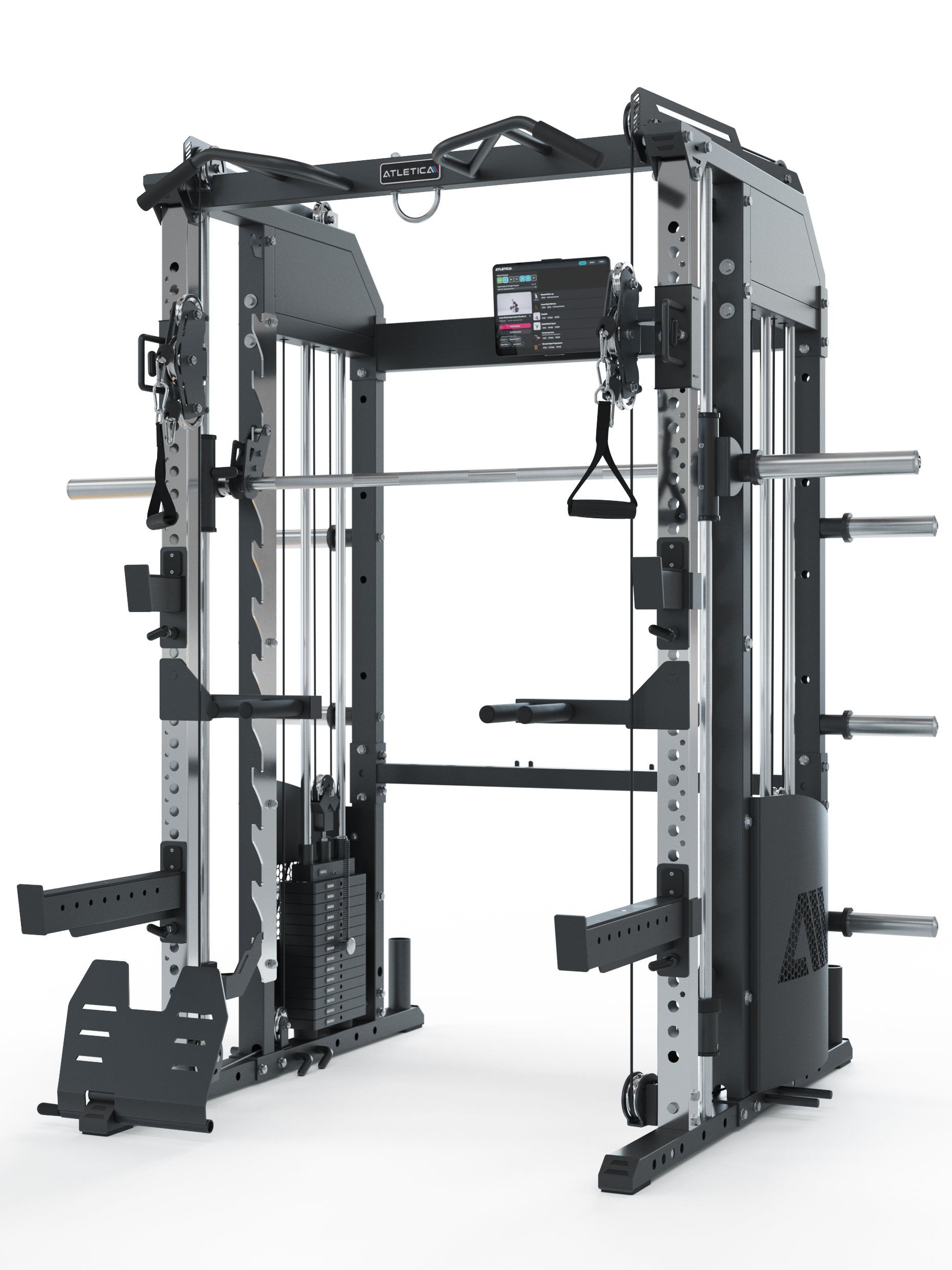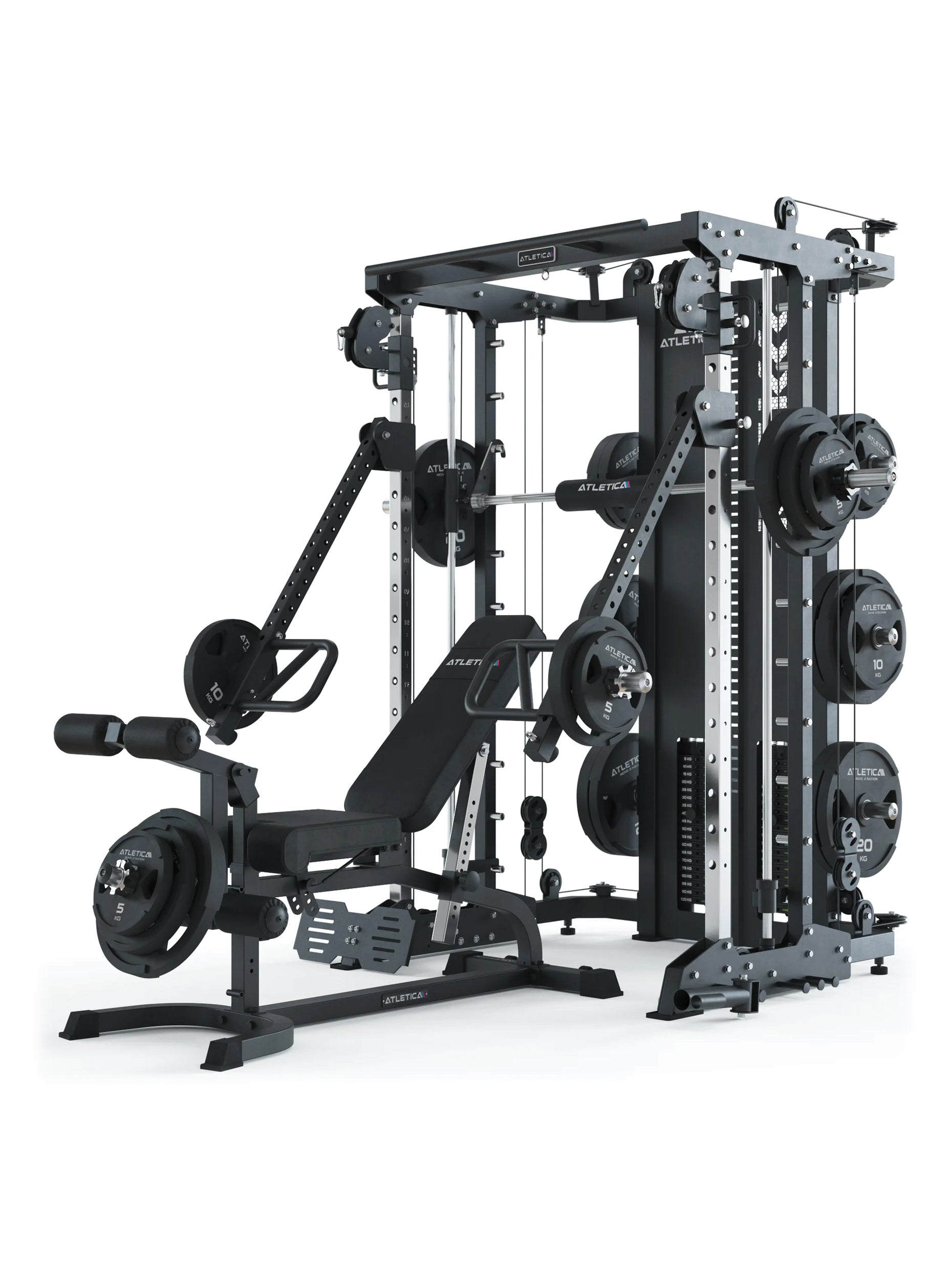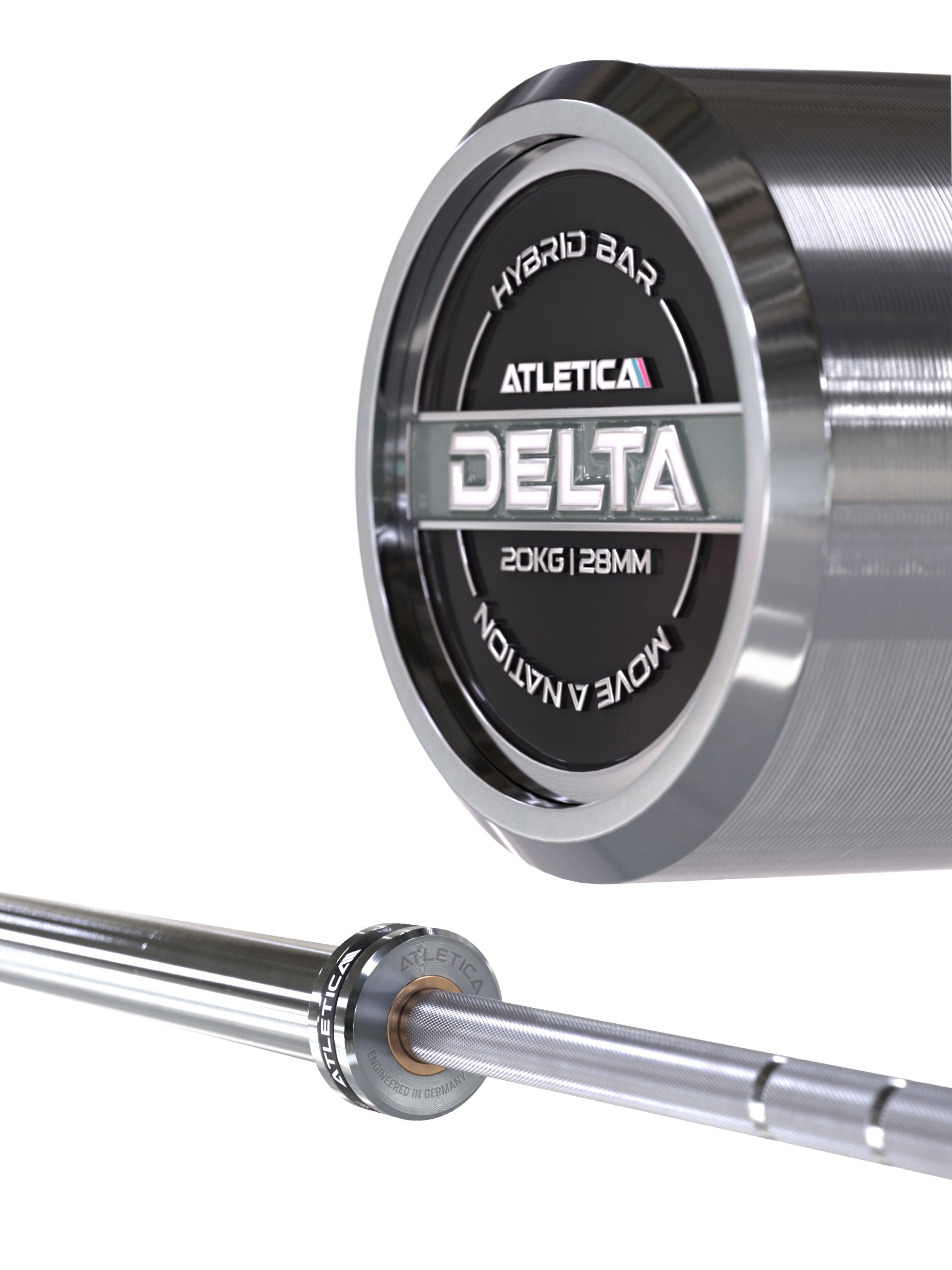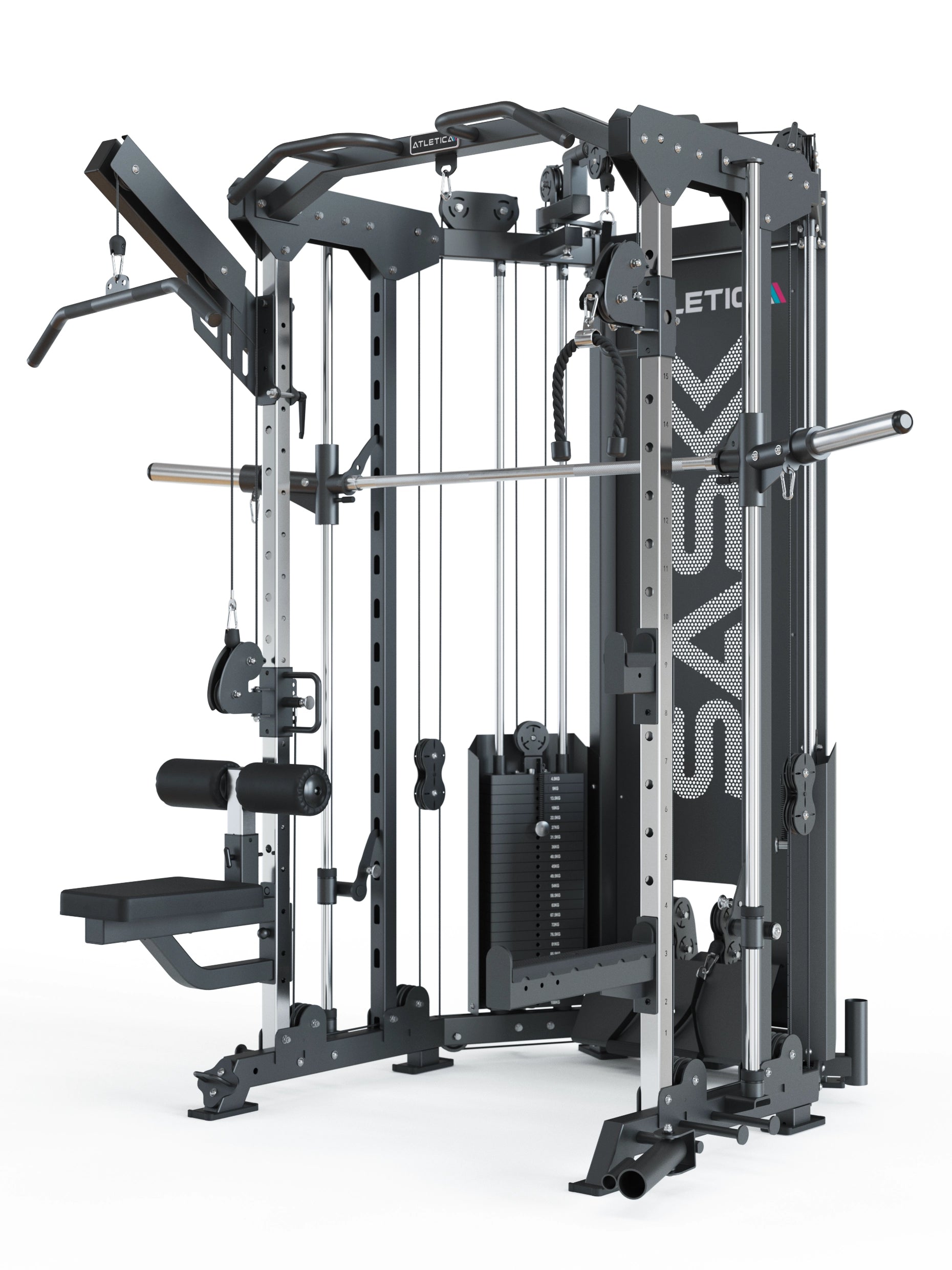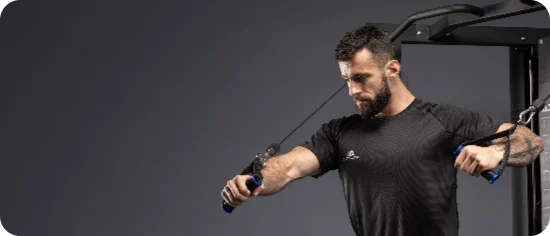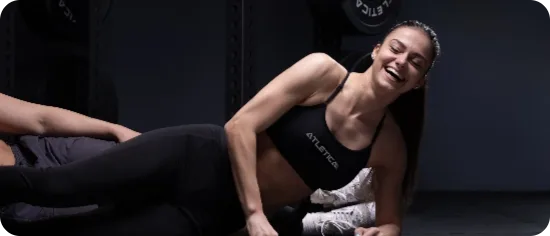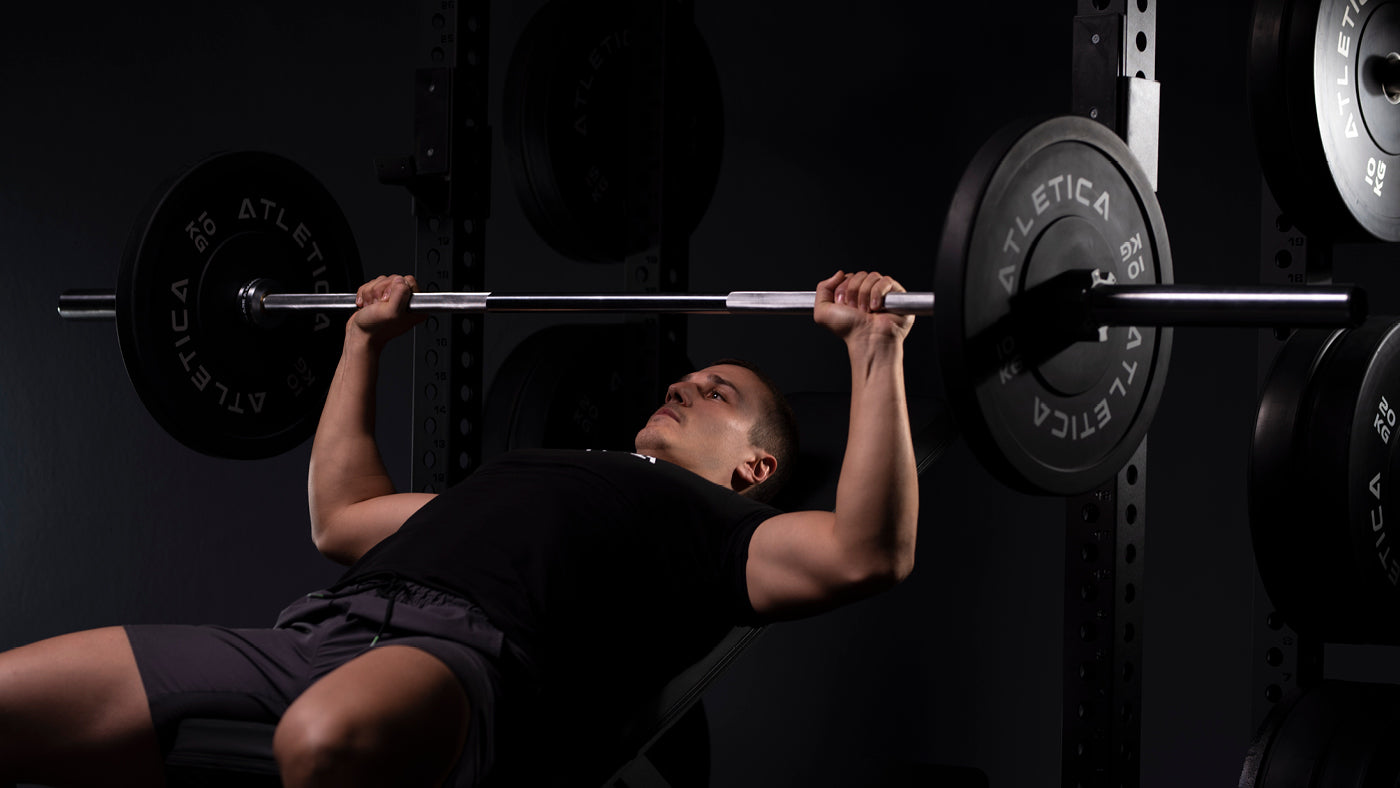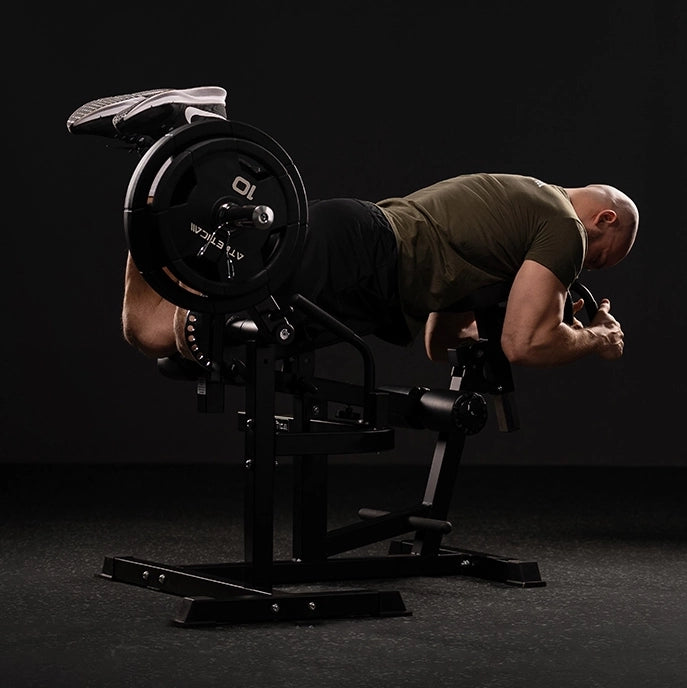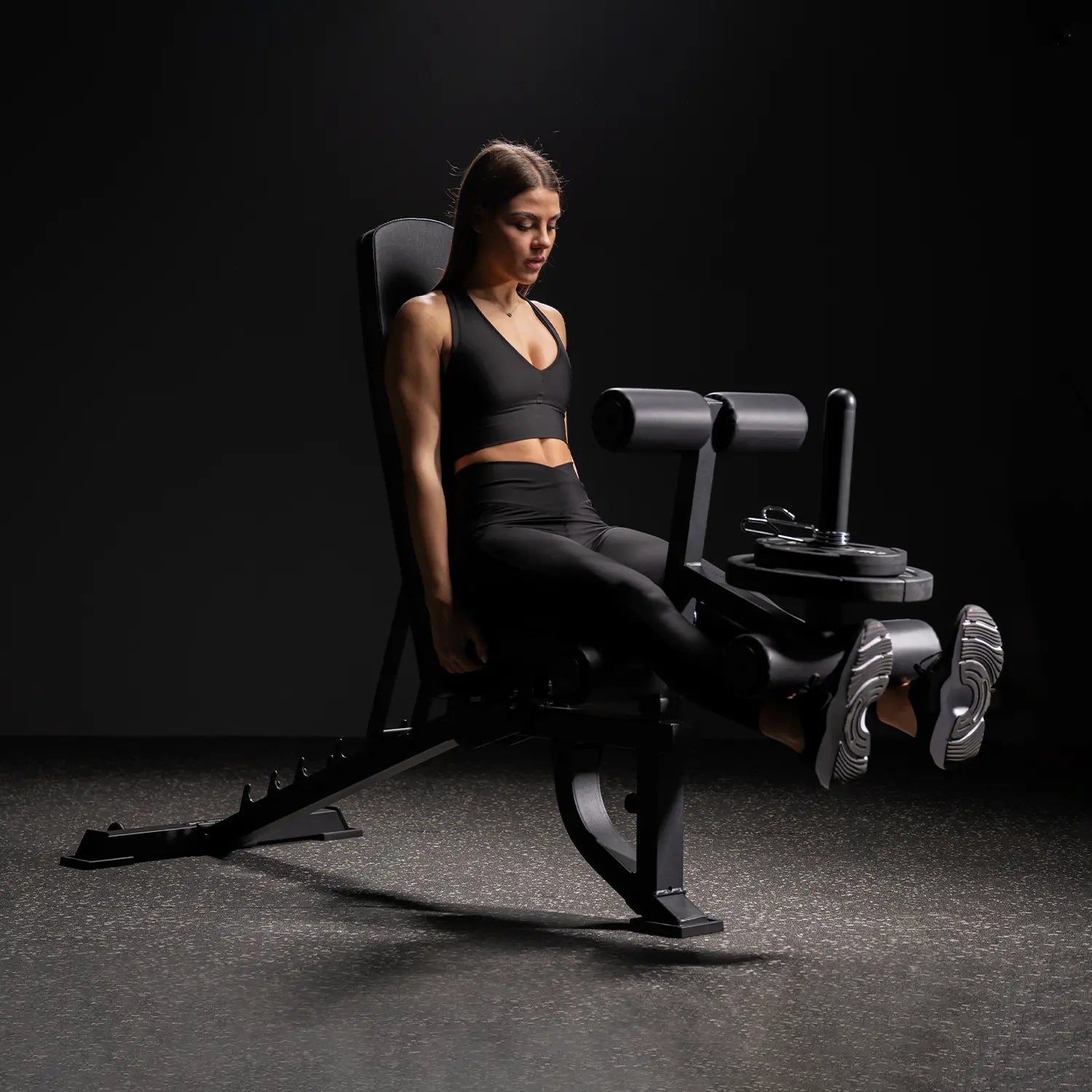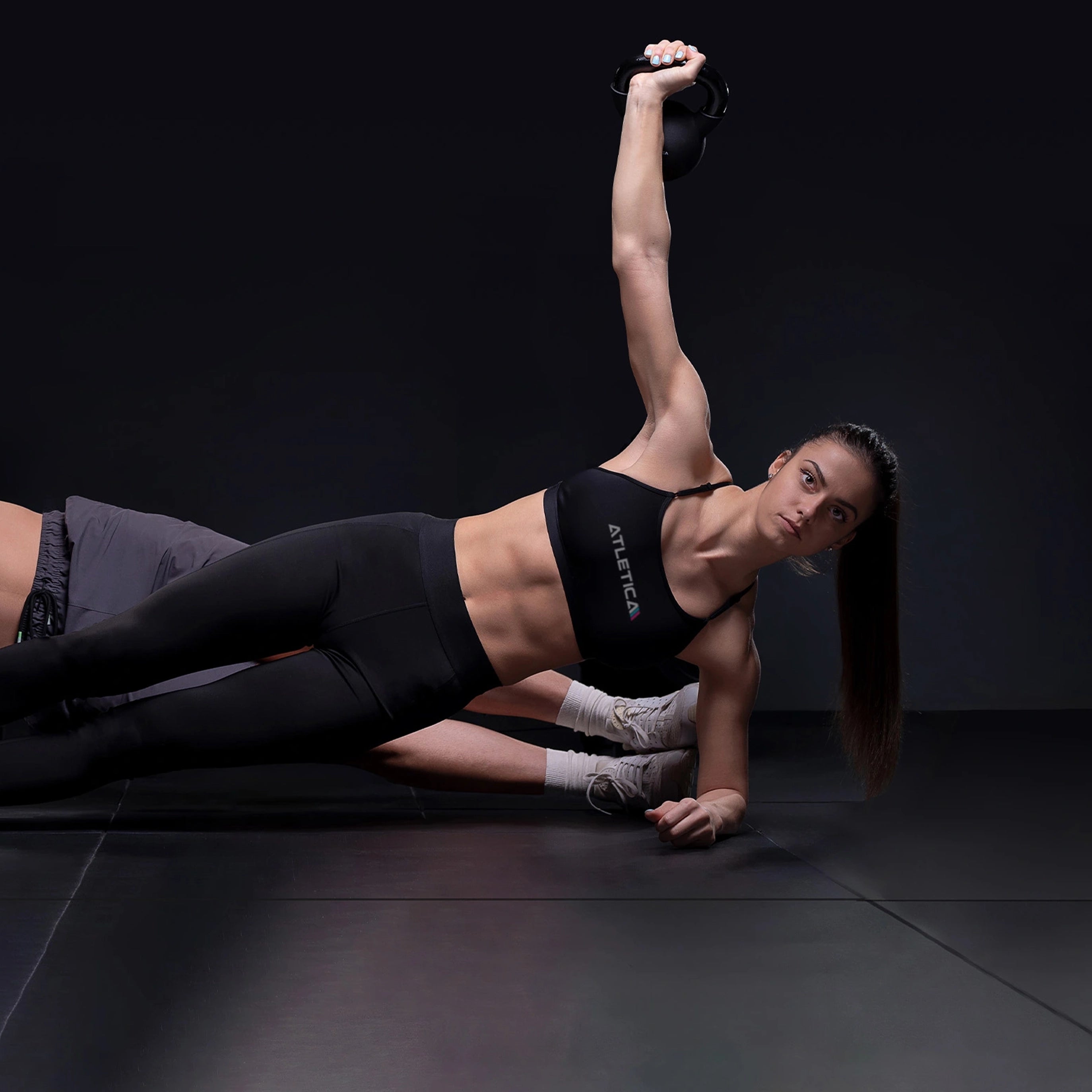One-arm rowing is another back exercise alongside classic rowing with a barbell or cable tower. In this post, you'll learn what makes it so special and why we like to integrate it into our training plan. Who is this variant suitable for and what dangers does it pose? Read the post to the end and learn more about one-arm rowing or unilateral training.
When rowing, you pull resistance towards your body and thereby train your arm flexors (biceps), your upper back (trapezius muscle) and your broad back muscle (latissimus dorsi). You can row with one arm (unilateral) or with two hands (bilateral).

What training equipment can I use to do one-arm rowing?
In classic rowing, you train bilaterally with the barbell. This means that you grab the barbell with both hands, lean forward slightly and then pull a resistance to your stomach. You can do one-arm rowing with dumbbells, kettlebells, resistance bands, on the cable tower, sandbags, TRX bands and the barbell in the landmine. It is important that you use training equipment that helps you most effectively to achieve your training goal.
What variations of one-arm rowing are there?
One-arm rowing: In this exercise, you pull the resistance past your body. You can perform the exercise with a rotation of the torso or with an anti-rotation.
Advantages and disadvantages of rotation/anti-rotation:
By rotating your torso, you strengthen your side abdominal muscles and core muscles. Unfortunately, you cannot move as much weight. Additionally, with torso rotation, you become more flexible in your thoracic spine and create more control in your upper back. This means that you can develop more power with anti-rotation.
Using various training equipment, you can perform the exercise with your own body weight or weights.
When using a cable machine , you usually pull the weight backwards with an upright upper body. With weights like kettlebells or dumbbells, you pull with your upper body bent forward due to gravity.
Training recommendation:
Incorporate one-arm rowing into your training plan alongside bilateral rowing for its benefits. This will provide a new stimulus and create more movement in your thoracic spine, which can protect you from tension and muscle injuries. Start with three sets of ten repetitions and increase the training weight. Slowly decrease the repetitions in this exercise over time and build strength.
Rowing with the kettlebell:
Exercise description:
When doing one-arm rowing with the kettlebell, you stand in a lunge. With the opposite hand and one arm outstretched, you grab the kettlebell. Your hips are bent and your upper body is leaning forward. With your free hand, you can hold on to a stable object such as a flat bench. Then you pull the kettlebell upwards. Your bent elbow goes past your body. This pulls the kettlebell more towards your hips. You should be able to build up tension in your latissimus dorsi. Finally, you bring the kettlebell back to the floor in a controlled manner. For the next repetition, the muscles remain tense and the kettlebell only touches the floor briefly. Because the center of gravity of the kettlebell is lower, you can pull it even higher than the dumbbell and recruit more muscle fibers.

When doing one-arm rowing with anti-rotation, the upper body is tightly tensed and does not move.
During a rotational movement, the outstretched arm pulls into the lowest position. The upper body rotates as far as possible to the side of the weight. Make sure that the free arm has enough support to rotate the upper body.
Who should do this exercise?
Basically, anyone can do the exercise. It is a question of your training goal and your training status whether you should add one-arm rowing to your training plan. If you want to build more muscle mass in the long term and are looking for an alternative to rowing with both arms, include this exercise. It takes a certain amount of training experience to feel the target muscles. Therefore, as a beginner, start with classic rowing (two hands). As soon as health risks, training status and training experience have been clarified, anyone can do this exercise.
Unilateral vs. Bilateral Training:
In bilateral training, both hands or feet are in contact with the ground. As you already know, you can perform exercises with one arm or one leg. This is called unilateral training. Both forms of training have advantages and disadvantages.
In bilateral training you have more potential to build strength. A two-legged squat is probably the most effective way to build strength. Nevertheless, unilateral training has an advantage for targeting different muscles. This way you can work on your weaknesses and improve. There is also a suspicion that unilateral training produces more activity in the target muscles.

Example:
You can perform the deadlift with the barbell with one leg or both legs on the floor. The target muscles of this exercise are the posterior chain. This means that you are primarily training the back of your legs, your buttocks and your lower back. If you do this exercise on one leg, your balance has more to do and your lower back is under less tension because you are doing the exercise on one leg with less weight. However, the hamstrings of the standing leg are under more tension.
Conclusion:
The one-arm row is an excellent exercise for building muscle and adding variety to your workout. You can do the exercise with or without rotation in the upper body and with different equipment. Dumbbells, kettlebells, sandbags, TRX baths and the barbell on the landmine are all excellent for rowing. Rotation makes your thoracic spine more flexible and trains your core. With anti-rotation, you build up more puncture support and can move more weight. Anyone can integrate this form of rowing into their training plan. It just depends on your training status, your training goal and health restrictions.
One-arm rowing is a unilateral exercise. There is also bilateral training, where you train with both hands or both feet. In unilateral training, you can train on your weaknesses. This can take your training to the next level and you can move more weight in basic exercises.
Try it out and get advice on the right equipment for your training goal in our showroom in Mainz . We look forward to seeing you!






